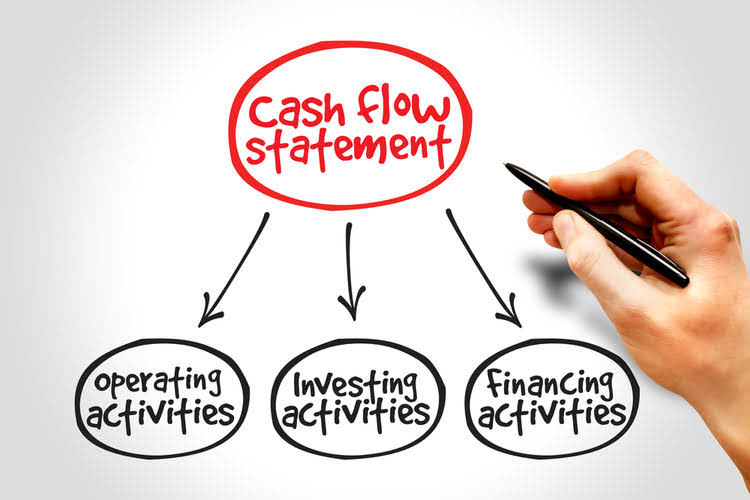
Making a trial balance at least once per period ensures everything is transparent and correct. There are unadjusted, adjusted, and post-closing trial balances. When you maintain accurate records, you’re less likely to face financial surprises. You’ll be more aware of your expenses, income, and overall cash flow.
- That lease agreement represents a contractual obligation and is considered a liability.
- Four key entities closely related to the normal balance are assets, liabilities, expenses, and revenues.
- Debits are recorded on the left side of an account, while credits are recorded on the right.
- Conversely, if the company bears a loss in the year, it comes on the credit side of the income summary account.
- Common examples of expense accounts include Rent Expense, Utilities Expense, Salaries Expense, and Advertising Expense.
- In other words, it’s the side (debit or credit) that increases the balance of the account.
Revenue
The normal balance of an account refers to whether it should have a debit or credit balance. On the other hand, the balance of an account refers to the actual amount of money or value in the account at a specific point in time. When the actual balance of an account does not match the normal balance, there is an error in the accounting records. This error must be corrected so that the financial statements are accurate. The statement provides insights into the company’s liquidity and cash management, which are essential for assessing its short-term viability.

Examples of Normal Balances
By thoroughly understanding the nature of your expense accounts’ debit balances, you’re primed to make strategic decisions that could benefit your tax position. For instance, timing your expense recognition to align with tax-efficient periods can optimize deductions. Just as harnessing the wind can propel a sailboat forward, mastering the flow of debit balances in your financial sails can steer you towards a more favourable tax outcome. It’s a synergy worth capturing; after all, smooth financial seas don’t just happen—they’re navigated. Normal debit balances in expense accounts are like health vitals—they don’t just reflect current conditions; they offer prognosis too. A consistent debit balance aligned with budgeted forecasts can be a sign of fiscal fitness, indicating you’re steering the company ship as planned.
Linking Normal Balances with Cash Flow Management
- For reference, the chart below sets out the type, side of the accounting equation (AE), and the normal balance of some typical accounts found within a small business bookkeeping system.
- Financial analysts usually use a 3 statement model in order to forecast and evaluate a company’s financial health.
- Accounts are classified into various categories, such as assets, liabilities, equity, revenues, and expenses.
- In budgeting and forecasting, normal balances serve as a guide for predicting future financial transactions and their impact on a company’s financial statements.
- An income statement account for expense items that are too insignificant to have their own separate general ledger accounts.
However, bloated debit balances, outpacing your revenue normal balance of expense growth, might trigger alarm bells. They can hint at unsustainable spending or inefficiencies needing a tourniquet. It’s through these normal debit balances that you can regularly pulse-check your business, ensuring that financial well-being is not just hoped for, but actively monitored and maintained. Expense accounts are temporary accounts because their balances reset to zero at the end of each accounting period.

Misunderstanding the Impact of Debits on Various Account Types

You could picture that as a big letter T, hence the term “T-account”. Normal balance, as the term suggests, is simply the side where the balance of the account is normally found. In accounting, an account is a specific asset, liability, or equity unit in the ledger that is used to store similar transactions.
What is the Normal Balance for Expenses
In business, making sure debits and credits in journal entries match is vital for clear financial reports. This affects how a company makes money and manages its spending, which changes its financial health. University instructors and accounting supervisors put a lot of effort into teaching this. They use tools like accounting online resources to help tell the financial story accurately. Following best practices in accounting is crucial for accurate financial records.
Beyond the Basics: Advanced Concepts Linked to Debit Balances
Another way to visualize business transactions https://thecougarpress.acslp.org/bookkeeping-services-market-size-trend-share-2034/ is to write a general journal entry. Let’s illustrate the general journal entries for the two transactions that were shown in the T-accounts above. The most common mistakes that lead to confusion with the normal balance of an account are when accountants confuse debits and credits or misclassify the accounts. This violates the Normal balance definition and is a common mistake. So, if you’re debiting an asset or expense account, you’re increasing its balance. If you’re crediting a liability, equity, or revenue account, you’re also increasing its balance.


This chart is useful as a quick reference to determine whether an increase or decrease in a particular type of account should be recorded as a debit or a credit. Here’s a simple table to illustrate how a double-entry accounting system might work with normal balances. In accounting, ‘Normal Balance’ doesn’t refer to a state of equilibrium or a mid-point between extremes. Instead, it signifies whether an increase in a particular account is recorded as a debit or a credit. A ‘debit’ entry is typically made on the left side of an account, while a ‘credit’ entry is recorded on the right. On the other hand, a credit to an account means you’re decreasing an asset or expense account, or increasing a liability or equity account.
- This guarantees that everything we publish is objective, accurate, and trustworthy.
- If a company provides a service and gives the client 30 days in which to pay, the company’s Service Revenues account and Accounts Receivable are affected.
- Defaulting makes you at threat of having your services disengaged and lately fees paying and reconnection amount to start services again.
- Expense accounts should be reviewed regularly, at least monthly, to ensure accuracy and timely identification of any discrepancies or areas of overspending.
- The same thing happens when we record revenue earned on the account; we credit the Sales Revenue account (its normal credit balance), and we debit Accounts Receivable.
- When a company spends money, it debits an expense account, showing an increase in costs.
Temporary accounts (or nominal accounts) include all of the revenue accounts, expense accounts, the owner’s drawing account, and the income summary account. Generally speaking, the balances in temporary accounts increase throughout the accounting year. At the end of the accounting year the balances will be transferred to the owner’s capital account or to a corporation’s retained earnings account. Revenue is the income a company generates from its business activities, such as sales of goods or services. Financial Forecasting For Startups Revenue accounts have a normal credit balance, increasing with credits and decreasing with debits. This aligns with their effect on equity, as revenues generally increase retained earnings, which also has a credit normal balance.
